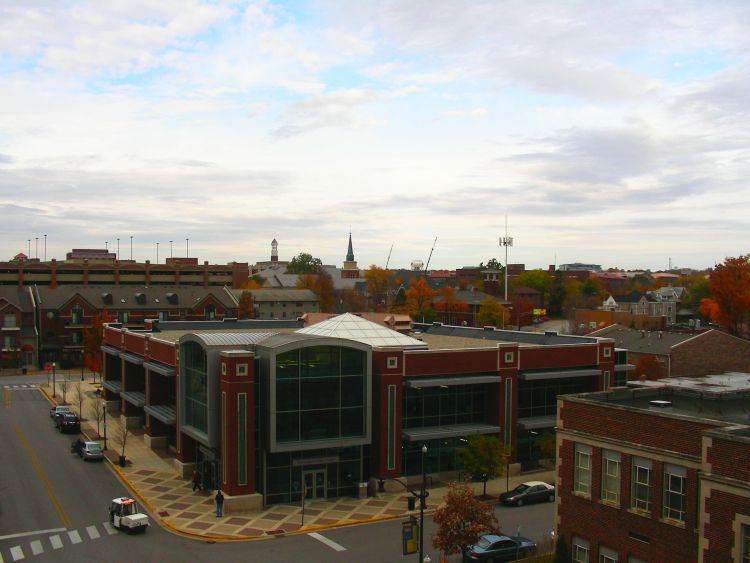
Moving to West Lafayette, Indiana: A Comprehensive Relocation Guide
Considering moving to West Lafayette, Indiana? This vibrant college town, home to Purdue University, combines world-class education, research innovation, and Big Ten athletics. Here’s your 2025 guide.
Demographic Profile to Consider If Moving to West Lafayette:
West Lafayette has a 2025 population of approximately 45,000 residents, dramatically shaped by Purdue University’s enrollment of over 50,000 students. Located across the Wabash River from sister city Lafayette in Tippecanoe County, West Lafayette exists almost entirely because of Purdue’s presence since 1869. The median age is just 21 years, making it one of America’s youngest cities demographically. The population is 69 percent White and notably 20 percent Asian, reflecting Purdue’s strong international student presence and engineering focus. Recent annexation brought much of Purdue’s campus officially within city limits. The community features distinct neighborhoods from student-oriented areas near campus to established residential districts and the village-like Chauncey Hill district. Find trusted local services for moving, living, and working in West Lafayette.West Lafayette Relocation Directory
Cost of Living to Consider If Moving to West Lafayette:
West Lafayette’s cost of living reflects its college town character. The median household income is approximately $33,500, heavily skewed by student households. However, the poverty rate of 37 percent is misleading, as it includes students living on limited incomes who don’t represent true economic hardship. Housing costs vary dramatically between student rentals near campus and family homes in established neighborhoods. Home values and rents are moderate compared to major metros but higher than rural Indiana. The university’s presence creates a bifurcated economy—affordable for students with purpose-built housing, yet offering quality neighborhoods for faculty and professionals. Overall, West Lafayette provides reasonable costs for permanent residents while accommodating transient student populations.
Economy and Job Market:
Purdue University dominates West Lafayette’s economy as the primary employer, directly employing thousands of faculty, staff, and researchers while supporting extensive student employment. The Purdue Research Park stands as one of America’s largest university-affiliated research parks, hosting technology companies, startups, and corporate research facilities. The Discovery District continues expanding innovation-focused development. Engineering, technology, pharmaceutical research, and advanced manufacturing sectors benefit from Purdue partnerships. Retail and service businesses along the Levee and throughout the city cater to students and residents. Many professionals work in research, education, or technology fields tied to university activities. The Lafayette-West Lafayette metro area provides additional employment diversity. The region’s economy centers on knowledge work, research, and innovation.
Education:
Education is West Lafayette’s reason for existence. Purdue University ranks among America’s top public universities, particularly renowned for engineering, agriculture, pharmacy, and aeronautics. With over 50,000 students, Purdue brings world-class research, celebrated faculty including astronauts Neil Armstrong and Amelia Earhart’s legacy, and Big Ten Conference athletics. West Lafayette Community School Corporation serves residential families with West Lafayette Elementary, Intermediate, and Junior-Senior High School, all highly regarded. However, some annexed areas remain in Tippecanoe School Corporation. The concentration of academic talent, research facilities, and intellectual culture creates an environment rare outside major research universities. Graduate programs and continuing education provide lifelong learning opportunities.
Recreation and Lifestyle:
West Lafayette offers quintessential college town living. Purdue football at historic Ross-Ade Stadium and basketball at Mackey Arena provide Big Ten excitement. The campus features beautiful architecture, museums, gardens, and the Boilermaker Aquatic Center. Wabash Landing and the Levee district offer shops, restaurants, movie theaters, and riverside activities. The new Pedestrian Bridge connects to Lafayette, expanding dining and entertainment options. Over 500 acres of parks and trails provide outdoor recreation. The Wabash River offers kayaking and fishing. Campus cultural events, including performances at Elliott Hall of Music and lectures by world-renowned speakers, enrich community life. Historic Harry’s Chocolate Shop, Triple XXX Restaurant, and Bruno’s delight generations of Boilermakers. The lifestyle blends academic energy, athletic tradition, and small-city accessibility.
Healthcare and Services:
Healthcare access serves the West Lafayette community through multiple regional providers. IU Health Arnett Hospital in Lafayette offers comprehensive services including emergency care, surgery, maternity, and specialized treatment. Franciscan Health Lafayette provides additional hospital services. Purdue University operates student health services. Numerous urgent care centers, medical offices, and specialty practices operate throughout the Lafayette-West Lafayette area. The presence of Purdue’s College of Pharmacy and various health science programs attracts quality medical professionals. For highly specialized care, Indianapolis hospitals are 65 miles south. The coordinated regional healthcare network ensures adequate coverage for permanent residents and the large student population.
Transportation:
West Lafayette benefits from comprehensive transportation for a college town. CityBus operates extensive bus service throughout West Lafayette, Lafayette, and Purdue’s campus with frequent routes serving student needs. Purdue provides additional campus shuttle systems. Interstate 65 passes just west of the metro area, connecting Indianapolis (65 miles south) and Chicago (120 miles north). U.S. Route 231 runs through Lafayette. State Road 26 crosses the Wabash River between the sister cities. Amtrak’s Cardinal line serves Lafayette with service to Indianapolis and Chicago. The Purdue University Airport accommodates general aviation. Most permanent residents drive, but students often manage without cars using the robust bus system and bike-friendly infrastructure. Indianapolis International Airport serves commercial air travel needs.
Conclusion:
Moving to West Lafayette in 2025 means joining one of America’s premier college towns, where Purdue University’s world-class academics, Big Ten athletics, and research innovation create dynamic living enriched by intellectual energy and Boilermaker tradition.

